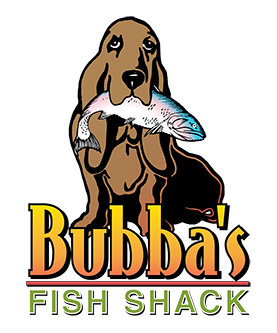You already know that it makes a great sandwich, basket, and platter, but what do you really know about Flounder. Instead of letting you “flounder around,” we are here to guide you through some insightful points about this delightful flatfish. We won’t leave you flopping like a flounder at low tide. We are going to share the facts. By the time we are done, we are confident that if you avoid eating this flavorful fish, you will flounder in a sea of remorse. Enough with the bad dad jokes, on to the fish facts.
Flounder is a demersal fish, which is really just a really fancy way of saying it is a fish that lives and feeds near the bottom of the ocean. Other commonly known demersal fish are halibut, cod, haddock, and sole. These fish tend to have less fish oil than other types of fish but are well known for their mild, slightly sweeter flavors. It is often challenging to tell the difference between flounder and halibut, partially because halibut can be sometimes called flounder as a more general term. Flounder are normally smaller fish. They grow up to about 3 feet vs. a 500 pound 8-foot halibut.
From a nutritional standpoint, flounder are nutrient-rich fish with 24 grams of high-quality protein per 200 grams of a cooked serving. Flounder can be a primary source of amino acids, and it contains a full range of essential acids. These things are necessary to maintain healthy organs, muscles, and tissues in all body cells.
Flounder is also one of the lowest fatty fishes consumed in the United States, featuring only 5 grams of fat and 1.2 grams of saturated fats per 200-gram serving. It contains less than 200 calories per serving, making it an excellent offering for those on a diet. However, if you are attempting to watch your sodium intake, be mindful. Flounder contains 700 milligrams of sodium per 200-gram serving.
But it is a rich source of phosphorus for healthy bones and strong teeth, magnesium for controlling blood pressure and blood sugars, and vitamins for converting food into energy. It lacks calcium and iron, so you would need to source that elsewhere.
Flounder can be cooked and served in many different ways. It is typically cut into fillets. Each fish yields 4 fillets. The only major downside of this fish is the difficulty of harvesting the fillets. You will either need a trained chef or a lot of practice time. So we recommend that if you do not already have the skills to fillet a fish, consider just picking it up from your local market.
Flounder can be fried, baked, or eaten fresh with lemon and salt. At Bubba’s Fish Shack, we like to serve southern fried seafood the way it was meant to be made! That means coating it in our perfectly mixed and light batter before frying it to golden perfection to bring out the flavors and textures of this sweet and flaky fish.
Flounder makes a fantastic sandwich when paired with toasted sourdough bread, lettuce, red onion, fried green tomatoes, and a Cajun ranch. It can be a great basked when served with fries or as a platter by adding coleslaw and our homemade hushpuppies. It also pairs exceptionally well with our other offerings as part of the First Mate’s Platter or Captain’s Platter.
Come give our Flounder a try. This light, flaky, tender, and sweet-tasting fish is nothing to wallow over, but it is sure to make a big splash.
Do you love Bubba’s, Fish Shack? Check out all of our menu offerings here: www.bubbasfishshack.com, and then head over to www.divinedininggroup.com to check out our family of restaurants all along the Grand Strand!
